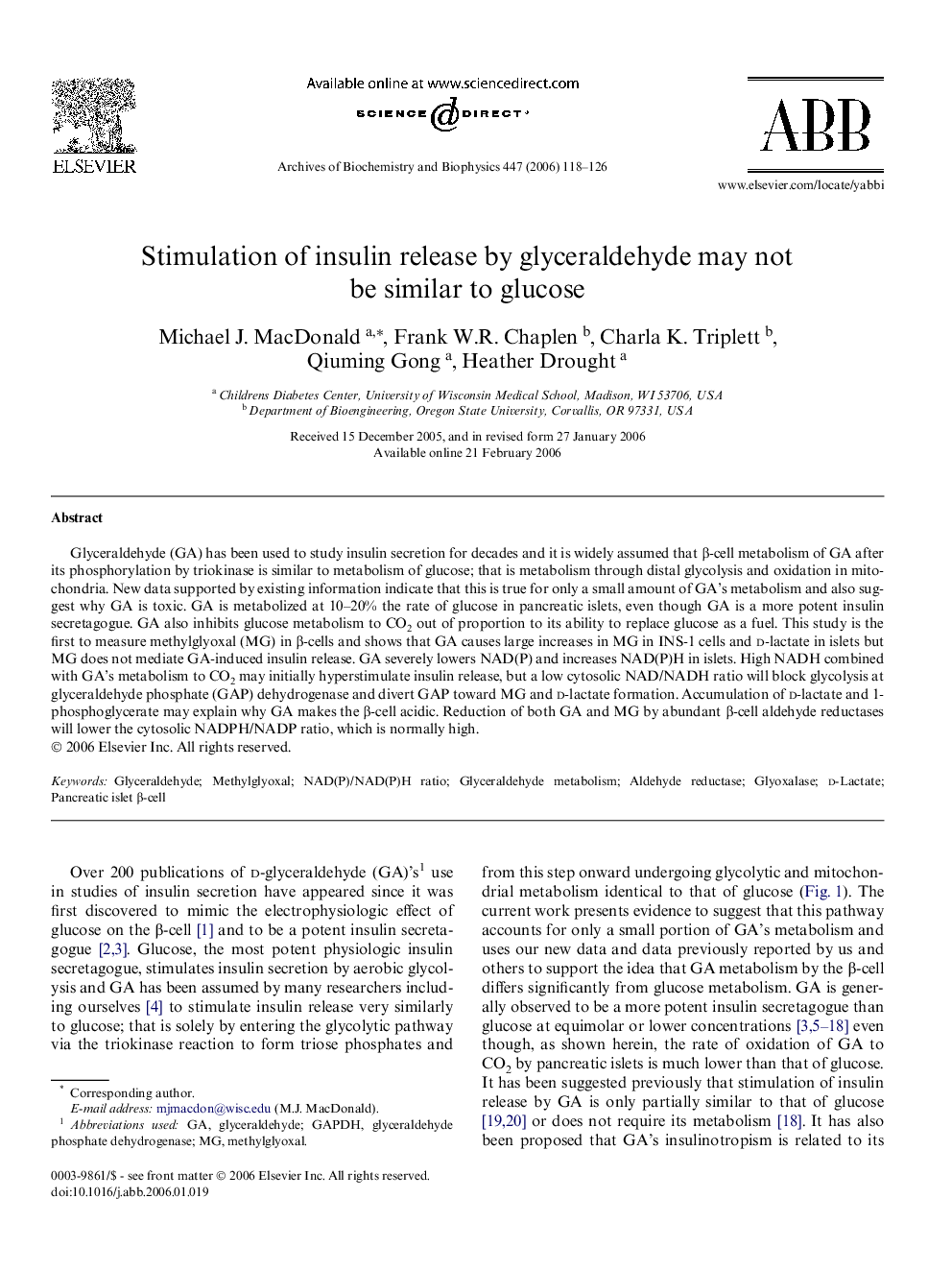| کد مقاله | کد نشریه | سال انتشار | مقاله انگلیسی | نسخه تمام متن |
|---|---|---|---|---|
| 1927518 | 1536529 | 2006 | 9 صفحه PDF | دانلود رایگان |

Glyceraldehyde (GA) has been used to study insulin secretion for decades and it is widely assumed that β-cell metabolism of GA after its phosphorylation by triokinase is similar to metabolism of glucose; that is metabolism through distal glycolysis and oxidation in mitochondria. New data supported by existing information indicate that this is true for only a small amount of GA’s metabolism and also suggest why GA is toxic. GA is metabolized at 10–20% the rate of glucose in pancreatic islets, even though GA is a more potent insulin secretagogue. GA also inhibits glucose metabolism to CO2 out of proportion to its ability to replace glucose as a fuel. This study is the first to measure methylglyoxal (MG) in β-cells and shows that GA causes large increases in MG in INS-1 cells and d-lactate in islets but MG does not mediate GA-induced insulin release. GA severely lowers NAD(P) and increases NAD(P)H in islets. High NADH combined with GA’s metabolism to CO2 may initially hyperstimulate insulin release, but a low cytosolic NAD/NADH ratio will block glycolysis at glyceraldehyde phosphate (GAP) dehydrogenase and divert GAP toward MG and d-lactate formation. Accumulation of d-lactate and 1-phosphoglycerate may explain why GA makes the β-cell acidic. Reduction of both GA and MG by abundant β-cell aldehyde reductases will lower the cytosolic NADPH/NADP ratio, which is normally high.
Journal: Archives of Biochemistry and Biophysics - Volume 447, Issue 2, 15 March 2006, Pages 118–126